
Christian Democracy was a Christian democratic political party in Italy. The DC was founded on 15 December 1943 in the Italian Social Republic as the nominal successor of the Italian People's Party,which had the same symbol,a crusader shield. As a Catholic-inspired,centrist,catch-all party comprising both centre-right and centre-left political factions,the DC played a dominant role in the politics of Italy for fifty years,and had been part of the government from soon after its inception until its final demise on 16 January 1994 amid the Tangentopoli scandals. Christian Democrats led the Italian government continuously from 1946 until 1981. The party was nicknamed the "White Whale" due to its huge organisation and official colour. During its time in government,the Italian Communist Party was the largest opposition party.

An institutional referendum was held by universal suffrage in the Kingdom of Italy on 2 June 1946,a key event of contemporary Italian history. Until 1946,Italy was a kingdom ruled by the House of Savoy,reigning since the unification of Italy in 1861 and previously rulers of the Kingdom of Sardinia. In 1922,the rise of Benito Mussolini and the creation of the Fascist regime in Italy,which eventually resulted in engaging the country in World War II alongside Nazi Germany,considerably weakened the role of the royal house.

Alcide Amedeo Francesco De Gasperi was an Italian politician and statesman who founded the Christian Democracy party and served as prime minister of Italy in eight successive coalition governments from 1945 to 1953.
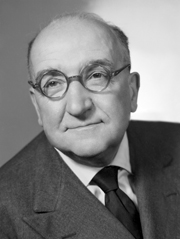
Adone Alvaro Ugo Natale Camillo Zoli was an Italian politician who served as the 35th prime minister of Italy from May 1957 to July 1958;he was the first senator to have ever held the office.

The Italian Republican Party is a political party in Italy established in 1895,which makes it the oldest political party still active in the country. The PRI identifies with 19th-century classical radicalism,as well as Mazzinianism,and its modern incarnation is associated with liberalism,social liberalism,and centrism. The PRI has old roots and a long history that began with a left-wing position,being the heir of the Historical Far Left and claiming descent from the political thought of Giuseppe Mazzini and Giuseppe Garibaldi. With the rise of the Italian Communist Party and the Italian Socialist Party (PSI) to its left,it was associated with centre-left politics. The early PRI was also known for its anti-clerical,anti-monarchist,republican,and later anti-fascist stances. While maintaining those traits,during the second half of the 20th century the party moved towards the centre on the left–right political spectrum,becoming increasingly economically liberal.

Mario Scelba was an Italian politician and statesman who was the 33rd prime minister of Italy from February 1954 to July 1955. A founder of Christian Democracy (DC),Scelba was one of the longest-serving Minister of the Interior in the history of the republic,having served at the Viminale Palace in three distinct terms from 1947 to 1962.

Giuseppe Pella was an Italian Christian Democratic politician and statesman who served as the 31st prime minister of Italy from 1953 to 1954. He was also Minister of Treasury,Budget and of Foreign Affairs during the 1950s and early 1960s. Pella served as President of the European Parliament from 1954 to 1956 after the death of Alcide De Gasperi.

The Italian Liberal Party was a liberal political party in Italy.
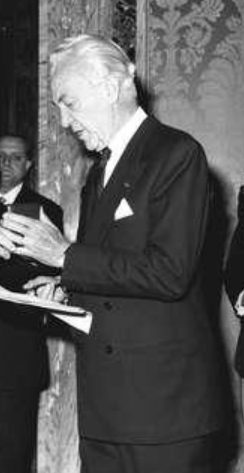
Count NicolòCarandini was a leader of Italian post−World War II liberalism and a champion of European Federalism. He was the first Italian ambassador to Britain after World War II,and the first president of Alitalia from its foundation in 1948 until his retirement in 1968.
The Italian Democratic Party was an Italian right-wing political party founded in 1944.
The Italian Democratic Party of Monarchist Unity was an Italian monarchist political party.
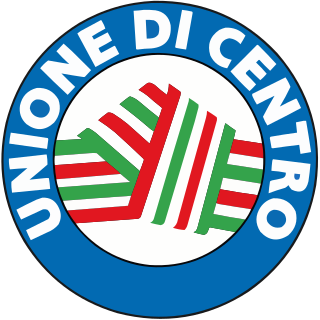
The Union of the Centre was a minor liberal political party in Italy. The party was a successor of the Italian Liberal Party.

The Italian Liberal Party is a minor liberal political party in Italy,which considers itself to be the successor of the original Italian Liberal Party (PLI),the Italian main centre-right liberal party that was active in different capacities from 1922 to 1994. Originally named the Liberal Party,the new PLI changed its name in 2004. It is not represented in the Italian Parliament.
Bruno Villabruna was an Italian lawyer and liberal politician.
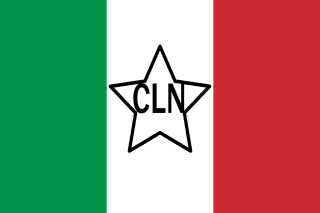
The National Liberation Committee was a political umbrella organization and the main representative of the Italian resistance movement fighting against the occupying forces of Nazi Germany and the fascist collaborationist forces of the Italian Social Republic during the German occupation of Italy in the aftermath of the armistice of Cassibile,while simultaneously fighting against Italian fascists during the Italian Civil War. It coordinated and directed the Italian resistance and was subdivided into the Central Committee for National Liberation (CCLN),which was based in Rome,and the later National Liberation Committee for Northern Italy (CLNAI),which was based in Milan. The CNL was a multi-party entity,whose members were united by their anti-fascism.

The Italian Democratic Socialist Party is a minor social-democratic political party in Italy established in 2004 as the continuation of the historical Italian Democratic Socialist Party,so that the new PSDI numbers its congresses in perfect continuity with the old PSDI. After being part of The Union in 2006,the party supported The People of Freedom (PdL) of the centre-right coalition in 2013,while in 2018 it supported Forza Italia,which succeeded the PdL.
Leone Cattani was an Italian lawyer,politician and anti-Fascist activist.
Mario Pannunzio was an Italian journalist and politician. As a journalist he was the director in charge of the daily newspaper Risorgimento Liberale in the 1940s and of the weekly political magazine Il Mondo in the 1950s. As a politician he was a co-founder of the revived Italian Liberal Party in the 1940s and then of the Radical Party in 1955.
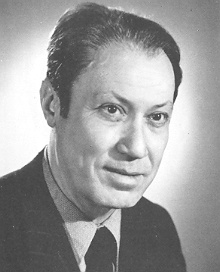
Paolo Vittorelli was the pseudonym used by Raffaello Battino,an Italian journalist-commentator,author and politician of the centre-left. As his public profile grew,he was increasingly referred to as Paolo Battino Vittorelli,the name by which he is identified in most posthumous sources. He engaged actively in antifascist propaganda work during the war years,most of which he spent exiled in Cairo.
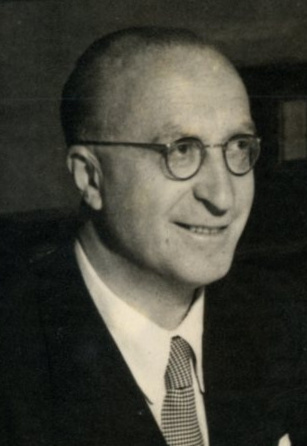
Marquis Falcone Lucifero was an Italian politician,who served as Minister of Agriculture and Forests of the Kingdom of Italy in the Badoglio I Cabinet,and Minister of the Royal House from 1944 to 1946. After the abolition of the monarchy in Italy he remained in the country as Umberto II’s official representative.















